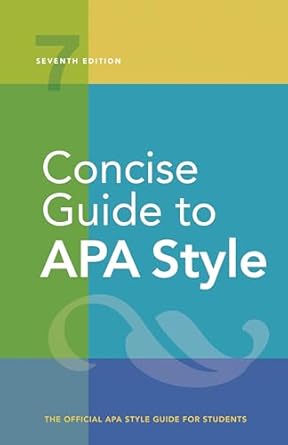[toc]
reference list guide alphabetization abbreviations
Concise Guide to APA Style: 7th Edition (OFFICIAL)
Page 266 Review
Analyzing the Nuances of Reference Lists: A Deep Dive
This excerpt delves into the intricacies of creating and understanding reference lists, crucial for academic and professional writing.
Let’s break down the key elements.
Alphabetization Rules: Beyond the Basics
The passage emphasizes a specific rule for alphabetizing entries: “alphabetize the entry by the first significant word of the title (i.e., ignoring the words “A,” “An,” and “The” at the beginning of the title).” This is a standard practice in citation styles like APA and MLA, ensuring consistency and ease of navigation within the reference list.
By ignoring articles like ‘A,’ ‘An,’ and ‘The,’ the focus shifts to the substantive content words, streamlining the search process.
Furthermore, the text addresses the unique challenge of alphabetizing numerals: “Alphabetize numerals as though they were spelled out (e.g., alphabetize 22 as though it were “twenty-two’).” This nuanced rule ensures that numerical entries are correctly positioned within the alphabetical sequence.
The example provided, comparing “Top 100 business schools” and “Top 10 nursing specialties,” clearly illustrates how spelling out the numbers (“one hundred” vs. “ten”) dictates their placement.
Similarly, “Theological studies” precedes “200 years” because “theological” comes before “two hundred” alphabetically.
This attention to detail showcases the rigor required for creating accurate and easily navigable reference lists.
Handling Works Without Authors
The text briefly mentions how to cite works with no author: “For citing works with no author in text, see Section 8.14.” While the specific details are not provided in this excerpt, the reference to another section indicates that the complete style guide offers comprehensive guidance on this common citation scenario.
Typically, in such cases, the title of the work is used in place of the author’s name in the citation.
Abbreviations in Reference Lists: Saving Space, Maintaining Clarity
A significant portion of the excerpt is dedicated to common abbreviations used in reference lists: “Some parts of books, reports, and other publications are abbreviated in the reference list to save space, including the following examples.
Many, but not all, reference abbreviations are capitalized.” This section provides a concise list of abbreviations and their corresponding meanings.
Here’s a breakdown of some of the key abbreviations and their significance:
- ed. (edition): Indicates the edition of a book (e.g., 2nd ed. for the second edition).
- Rev. ed. (revised edition): Denotes a revised version of the original work.
- Ed. (Eds.) (editor/editors): Credits the editor(s) of a collected work or anthology.
- Trans. (translator(s)): Acknowledges the individual(s) responsible for translating the work from one language to another.
- Narr. (Narrs.) (narrator/narrators): Credits the narrator(s) of audiobooks or other narrated works.
- n.d. (no date): Used when the publication date is unknown.
- p. (pp.) (page/pages): Specifies the page number(s) where information can be found.
- para. (paras.) (paragraph/paragraphs): Indicates the specific paragraph(s) containing the cited material.
- Vol. (Vols.) (volume/volumes): Designates the volume number of a multi-volume work.
- No. (number): Refers to the issue number of a journal or magazine.
- Pt. (part): Specifies the part number of a larger work.
- Tech.
Rep. (technical report): Identifies a document as a technical report.
- Suppl. (supplement): Indicates a supplementary material accompanying the main work.
The text accurately points out that “Many, but not all, reference abbreviations are capitalized.” This highlights the need for careful attention to detail and adherence to the specific style guide being used, as capitalization conventions can vary.
The Importance of Accuracy and Consistency
In conclusion, this excerpt provides a valuable glimpse into the meticulous nature of creating and interpreting reference lists.
From alphabetization rules to abbreviations, the passage underscores the importance of accuracy, consistency, and adherence to established guidelines.
By understanding these nuances, writers can ensure the credibility and accessibility of their work.
Buy full ebook for only $18: https://www.lulu.com/shop/american-psychological-association/concise-guide-to-apa-style-7th-edition-official/ebook/product-rmzpq54.html?page=1&pageSize=4
Reference List Guide Alphabetization Abbreviations
Read more: Disability Language: Bias-Free Guidelines & Respect

